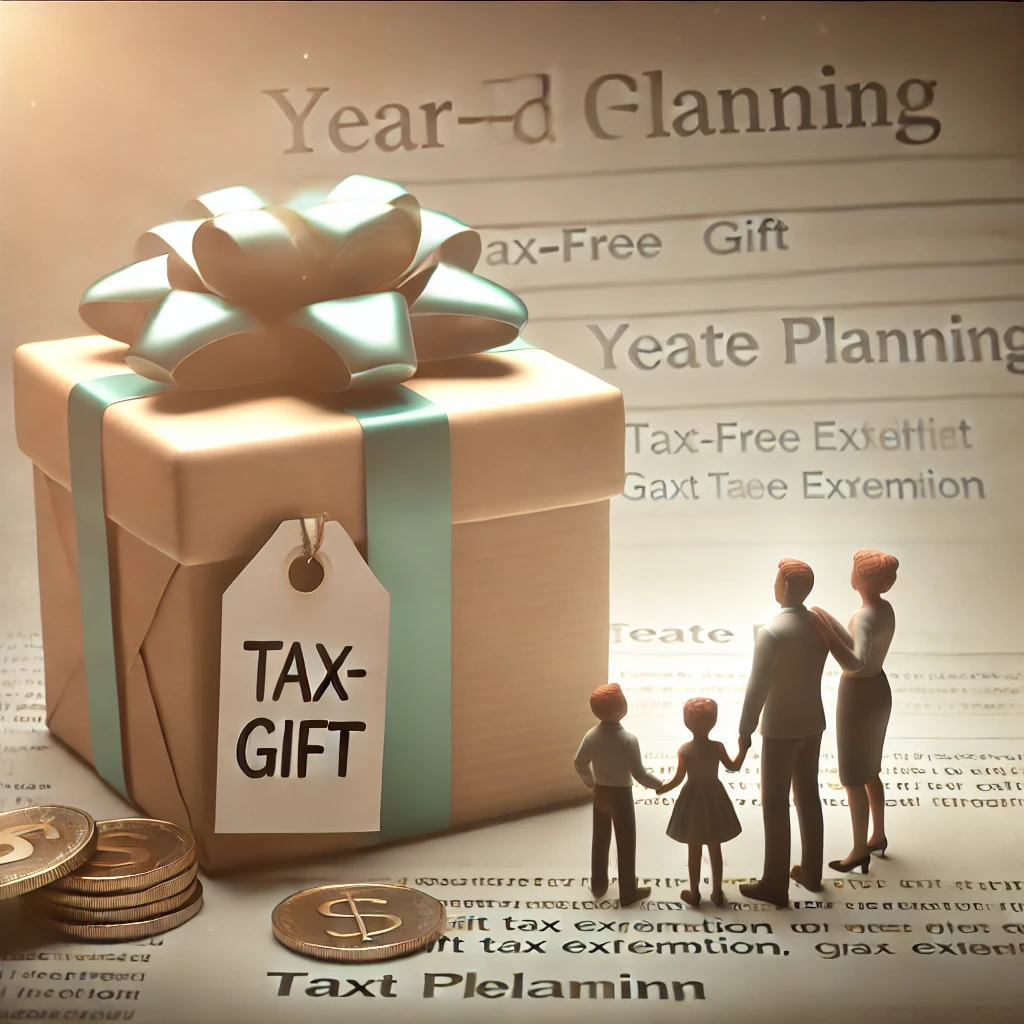Year-End Gifting for Estate Planning: Maximizing Tax Savings Before the 2017 Tax Act Sunset

Estate planning is a critical component of wealth management, especially for high-net-worth individuals seeking to transfer assets to future generations with minimal tax implications. As the year-end approaches, gifting strategies become particularly important for reducing taxable estates. This is especially relevant with the scheduled sunset of the 2017 Tax Cuts and Jobs Act (TCJA), which is set to reduce the current estate and gift tax exemptions after 2025. This article will explore the benefits of year-end gifting, the implications of the upcoming tax law changes, and strategies for maximizing tax efficiency through gifts.
The Importance of Year-End Gifting in Estate Planning
Year-end gifting is an effective method to reduce the size of an estate and take advantage of current tax exclusions. Under current law, individuals can gift up to $18,000 per recipient annually without incurring any gift tax (rising to $19,000 in 2025). Married couples can combine their exemptions to gift up to $36,000 (or $38,000 in 2025) per recipient. These gifts can be distributed to any number of recipients, providing a flexible way to transfer wealth without diminishing the lifetime estate tax exemption.
Furthermore, any amount gifted more than the annual exclusion counts against the individual’s lifetime exemption, which currently stands at $13.61 million (expected to rise to $13.99 million in 2025). Utilizing these exemptions before the TCJA sunsets at the end of 2025 is crucial, as the lifetime exemption is set to decrease dramatically to approximately $5 million, adjusted for inflation.
The Sunset of The 2017 Tax Act
The Tax Cuts and Jobs Act of 2017 temporarily doubled the estate and gift tax exemption, allowing individuals to transfer significantly more wealth tax-free. This provision, however, is set to expire on December 31, 2025, reverting the exemption back to pre-2018 levels. Without Congressional action, the exemption will drop to about $5 million per individual, affecting estate planning strategies for families with substantial assets .
The reduction of the exemption has prompted many individuals to adopt a “use it or lose it” approach. Gifting large amounts before the sunset occurs can help maximize the current higher exemption amounts. The IRS has confirmed that there will be no “clawback” for those who use the higher exemption before 2026; meaning gifts made during the period of higher exemption will not be penalized when the exemption reduces.
Gifting Strategies to Consider Before the Sunset
Annual Exclusion Gifts: As noted, the annual gift exclusion allows for tax-free transfers up to $19,000 per person in 2025. This strategy is particularly useful for families with multiple heirs, as these gifts reduce the taxable estate without impacting the lifetime exemption. For example, a married couple with three children and six grandchildren could gift up to $38,000 per recipient, amounting to $342,000 annually without triggering any gift taxes.
Lifetime Gifts to Trusts: High-net-worth individuals can also make larger gifts that exceed the annual exclusion by utilizing their lifetime exemption. One popular strategy is transferring assets to an irrevocable trust, such as a Spousal Lifetime Access Trust (SLAT) or a Grantor Retained Annuity Trust (GRAT), which removes the gifted assets from the estate while allowing some control over the asset distribution.
Generation-Skipping Trusts: These trusts enable wealth to be passed to grandchildren or other beneficiaries at least two generations younger, bypassing the children’s estates. This allows assets to grow outside of the taxable estate over multiple generations while taking advantage of the generation-skipping transfer (GST) tax exemption, which is also expected to reduce after 2025.
Gifting Appreciating Assets: Gifting assets that are expected to appreciate over time, such as stocks or real estate, is an effective way to maximize tax savings. By transferring these assets now, individuals can remove future appreciation from their taxable estates, thereby reducing potential estate tax liability after the exemption decreases.
Direct Payment of Medical or Educational Expenses: Another effective gifting strategy involves paying medical bills or tuition directly to the provider on behalf of a beneficiary. These payments do not count against the annual or lifetime gift tax exclusion, providing an additional way to transfer wealth without triggering gift taxes.
Conclusion
With the sunset of the 2017 Tax Cuts and Jobs Act on the horizon, estate planners face a limited window to maximize the current high estate and gift tax exemptions. Year-end gifting offers a strategic opportunity to reduce taxable estates, especially when combined with more complex planning tools such as irrevocable trusts. By taking advantage of the current tax laws and gifting thresholds before the 2025 sunset, individuals can help ensure that their assets are passed to future generations in the most tax-efficient manner.
For Further Information on This Subject Please Call (704) 248-6325 or Email Us at Info@charlotteestatelawyer.Com today.